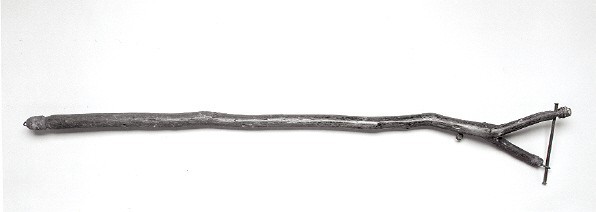Forked wooden sticks or yokes were used to tie captives together in a line or coffle when they were marched to the coast. The forked end was placed around a captive’s neck and the iron bar put across to hold it in place. The other end would be tied to another yoke, or the person behind would have to pick it up for the group to move forward.
The yokes were made from tropical hard wood, and were heavy, weighing about 7 kilograms. They were about two metres long to keep captive Africans apart. The yokes were a cheap solution to slave traders’ problem of moving Africans without needing expensive chains. Family members were often tied to the yoke with rope, making it more difficult for men to escape.
Large numbers of captive Africans were controlled by few guards in this way as the coffle walked in single file through the forested interior to the coast. This yoke is from West Africa and dates from the 19th century.
© Anti-Slavery International
Accession reference: Anti-Slavery International, MH LI 93-4


